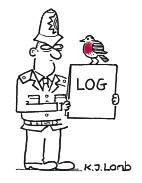I picked up the Bristol 410 from Spencer Lane-Jones, the Bristol specialist in Warminster whose clean and cheerful workshop had swiftly eliminated the petrol smell. It had to have been something simple: the (replaced) fuel tank was from a later Bristol and whoever replaced it failed to reinstall the correct breather.
Marque specialists are a good thing. Often trained by main dealerships, they have all the knowhow at half the price and, crucially, the enthusiasm and interest to keep older models going. Spencer Lane-Jones is a former colonel of the Royal Engineers who set up his business on leaving the army in 1987. Helped by the knowledgeable Peter Campbell, he does anything with Bristols, from transforming a 406 into a convertible to deploying the sensitive nose of the office female to test for petrol smells. Not only Bristols; there were also a couple of ACs in the workshop and a very nice Hotchkiss. The proprietor’s immaculate Aston Martin DB6 serves as day kennel to his Labradors.
The 410 is the only automatic I drive regularly. Like most drivers, I use my right foot for both throttle and brake, as on a manual. Whether this is better than two-footed driving in an auto — i.e., braking with the left — is a frequent issue in the Daily Telegraph motoring supplement’s Honest John advice pages. Honest John, a serious expert, is a convinced two-footer: ‘You wouldn’t walk with one foot, so why drive a two-pedal car with one foot?’ Ditto my former bomber-pilot uncle, who argued that as he flew Halifaxes using both feet, it made sense to do the same in cars.
You can see their point. If we were all brought up to brake with the left we’d be unlikely to hit the wrong pedal with the right. Honest John adds that computer analysis proved that the 58 US Toyotas that allegedly accelerated out of control a while ago, causing a great manufacturer undeserved reputational damage, were all due to right-footed drivers pressing the throttle instead of the brake. This wouldn’t have happened, he says, if they’d been used to left-foot braking. He quotes www.videobash.com/video_show/woman-destroys-convenience-store-578 as a reference.
It seems to me there are three arguments against. First, most in this country drive manuals and we almost all passed our tests on them, so we brake with our right feet. Of course you can learn to brake with the left but unless you’ve done it for a long time you might in an emergency revert to the right and inadvertently stamp on the throttle.
Second, research has shown that many of us simply don’t brake hard enough in emergencies and, since most are right-footed, the left is likely to be weaker. Hence some manufacturers have introduced ‘brake assist’, an electronic enhancement of braking power.
Third, there’s the configuration of the pedals. I suspect that in most automatics it takes longer to get the left foot on the brake than the right, unless you drive with your leg uncomfortably angled. In the 410 your left foot naturally rests well forward, whereas your right, resting on the throttle, is much nearer the brake. There’s no danger of hitting them together because the brake stands well proud of the throttle. It’s much faster than moving your extended left foot up, across and down again.
It may be that when manoeuvring in a car park at low speeds it makes sense to use two feet, but otherwise I think it’s best to do what you’re used to. If you do decide to change, practise, practise, practise until you’re as automatic as your car. Meanwhile, until I get a Halifax on loan, I guess I’ll stick with the right foot.






Comments